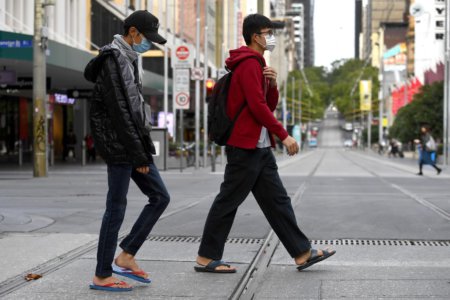
Here’s another blow for international students and universities in New South Wales — the state’s government has shelved its plans to return 1,000 international students to Sydney each week, reported The Sydney Morning Herald. A federal Department of Education spokeswoman said NSW had not yet submitted “a formal plan” and that bringing Australians home was the government’s first priority. Senior NSW government sources were quoted saying that a detailed plan to return 1,000 students had been developed late last year, but this had been put on hold since the northern beaches and western Sydney COVID-19 outbreaks.
The state’s Minister for Jobs, Investment, Tourism and Western Sydney Stuart Ayres said while returning international students will be a critical part of New South Wales’ economic recovery from COVID-19, their current priority is returning Australians home. “Given the arrivals cap of 3,000 a week into Sydney Airport — that currently leaves limited room to consider international students,” he said. “The NSW government will continue to work closely with the Commonwealth government and the education sector with the clear aim of having international students back in 2021.”
NSW Premier Gladys Berejiklian previously championed the reopening of New South Wales’ borders by using one-third of the state’s hotel quarantine slots to bring in international students as well as skilled migrants and specialist workers needed by businesses to boost the economy. This was at odds with Prime Minister Scott Morrison and a national cabinet agreement which made returning Australians the priority leading up to Christmas. Speaking about her original plans, Berejiklian said on Saturday (Jan. 9, 2021), “I think that’s always our aspiration, but we can’t pretend about how serious the current mutations of the virus are, and until we understand better what those strains are doing.”
Could students return to universities in New South Wales in mid or late 2021?
Would you opt for farm work if it meant getting more work hours per fortnight? https://t.co/B2oFKaZ1ZQ#studentvisa #Australia
— Study International (@Study_INTNL) January 8, 2021
Academics from various universities in NSW believe it is unlikely for a safe corridor trial to occur soon. “I think that’s unfortunate, but I certainly understand the position the government is in. I think we’ve just got to be patient,” Western Sydney University vice-chancellor Barney Glover. It might be possible to see the return of students as early as May, but the second half of the year was “looking more likely,” according to Glover.
Echoing him is Macquarie University pro vice-chancellor international Nicole Brigg who said, “it is hard to see a safe corridor happening soon.” University of Technology Sydney deputy vice-chancellor Iain Watt said the safe corridors plan had not been abandoned, but the country risks losing international students to other countries such as the UK and Canada, whose borders are open to them. Watt believes there needs to be a balance between the health and safety issues with economic issues. Students from low-risk countries should be allowed to travel to Australia too. He added that significant numbers of students are needed to help the thousands of businesses that rely on international student spending, and “not just a few hundred”.
Previously, IDP Connect CEO Simon Emmett said their research has shown that there is a risk associated with being perceived as a country that is less “open for business.” “Countries that have communicated strongly that international students are welcome, such as the UK, have seen a rise in attractiveness compared to countries with stricter border controls, such as Australia. While New Zealand continues to lead in international students’ perceptions of student support and assistance, they are suffering the same overall perception challenges as Australia. This is likely due to the strict border closures,” said Emmett.
International Education Association of Australia (IEAA) CEO Phil Honeywood was critical of the country’s decision to allow short-term visitors, including tennis and cricket players and their entourages, into the country, but continue to put barriers against international full fee-paying overseas students who are in Australia for the long-term rather than a few weeks. Honeywood said the average international student spent up to 100,000 Australian dollars a year in the Australian economy and stayed for three to four years.










